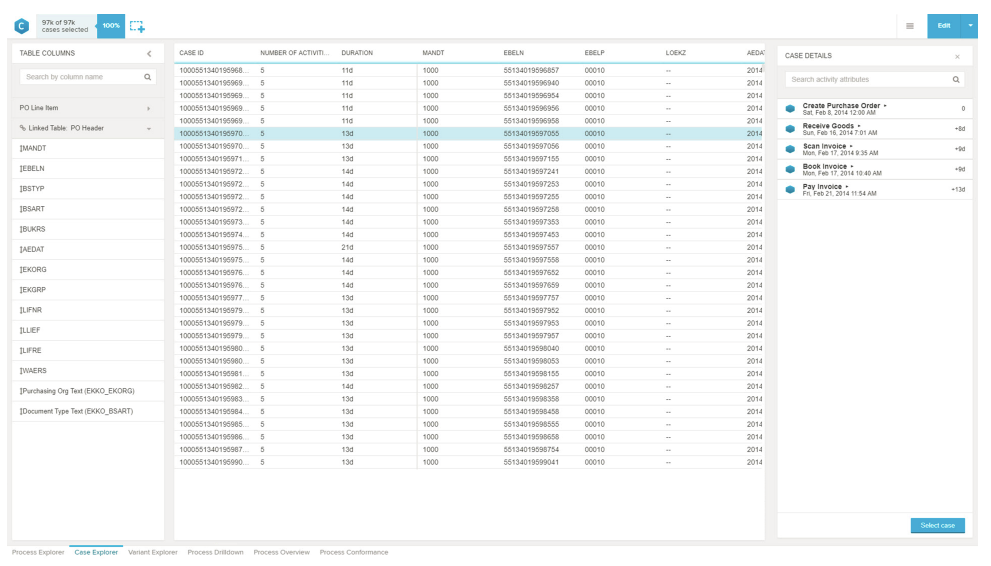

5 Signs that Your Business Process is too Complicated and In Need of Process Mining
As more automation opportunities arise, it is becoming increasingly imperative for businesses to use process mining to examine their business processes closely and determine those most ready to yield significant benefits from automation (and not solely focus on the latest technology stack!). Getting a more complete view of reality of a company’s processes and understand precisely what is happening there in real time and at the individual unit of output, these things can enable a company to move closer and much quicker to the goal of maximizing ROI through automation.
Process mining has always been a mainstay of process automation, but the surprising part – it is often overlooked or not given the priority it deserves by clients in their rush to RPA and Intelligent Automation. The underlying assumption is that processes in the company are running in the manner BPM has mapped them out, without exceptions. But in reality that is often not so, there are many alternatives and exceptional paths that business in a company gets executed, and it is the goal of process mining to find them all out and present them to the company’s process engineers for inspection and further corrective action.
The good part, process mining is a leading business process management technique that can be used relatively easily and quickly by an organization without any disruption to the underlying business processes. And the even better part, it can be used by companies of all sizes, it is not exclusively a large company technology. Once implemented it allows for ease in process automation and provides much better results than any manual mining operation.
The purpose of this short blog is to lay out the 5 most important factors that indicate your company really needs to look into process mining as the way to better understand your business processes. If your response to any one or two of these 5 key process characteristics is in the negative, our recommendation is your look into process mining.
In our view, it is very likely your business process will benefit big time from process mining, most companies we are aware of do! It provides real-time, actual, quantitative guideposts of your processes – that is in itself is a big advantage as all companies are heading to complete digital transformation. Moreover, it will allow you to analyze which specific processes are most in need of automation, and if using process mining can improve the company’s processes substantially and the order with which to begin!
Here are some critical signs to look for in a process that suggest your process likely will be in need of process mining, and the benefits it provides:
1. Significant Data Analysis in Your Process
By combining Robotic Process Automation (RPA) with Process Mining, businesses are now able to configure massive amounts of data and highlight the most valuable data and trends in order to make it readable to employees. So, keep in mind, process mining not only helps to identify and eliminate inefficiencies but it also streamlines process data collection. If you are getting overloaded with process data streams, and you’re able to only look at a few, process mining can help a great deal in this regard.
Below is a data sample from SAP Process Mining by Celonis. Not only does their process mining tool streamline the data but also enables the company to customize their own categories for data sorting.


2. Not Truly Understanding your Process
Not having a full understanding of business processes, and all the ways business things actually get done, can a big problem especially in the face of imperatives such as 100% process automation and digital transformation. This lack of process knowledge can come from many different factors: in some cases, processes are just too complex to follow so employees generalize them and hope for the best. Over time, this can lead to discrepancies in how each worker understands the processes and how they actually work, since essentially no one is fully aware of the process as a whole, rather everyone only knows it from their specific view of the surface.
If it is hard to follow what is actually being going on in your processes, and in particular you can’t get a hold of all the exceptional process paths that works get done on, that is a surefire sign that process mining is likely needed and will be of great help.
Take a look at the Purchase-Order example below and you will see how crazy and complex processes can be. More often than not, business processes tend to be just as detailed as the one below, if not more. Without a process mining tool, businesses can never truly wrap their head around the ins and outs of their process, causing them to miss the small deviations that go on to cause greater issues later on.


3. Complex HR work
The HR department tends to contain a plethora of repetitive tasks that can frustrate humans. All the manual labor that goes into inputting information into spreadsheets and logs is not only inefficient but is not making the best use of the people in HR whose jobs pertain to communication with others.
Process mining (especially the element of it called task mining) can allow for these employees to be doing the work they were meant to do while their tedious processes become essentially autonomous.
4. Unidentifiable Problems or Gaps in Your End-to-end Process
If businesses do not have a clear picture of their processes end-to-end as they actually exists, they will find it difficult even to notice or pinpoint any serious issues, let alone find solutions for them. Not understanding the process end-to-end can mean that there are gaps needing to be understood and filled in. Within these gaps are where the most bottlenecks are likely to arise since there is a lack of accountability for what the process flow is.
Process Mining can be extremely useful in this case since it can almost instantaneously identify gaps and bottlenecks in processes; some process mining software packages even go so far as to identify root causes of problems so companies have an easier time figuring out where and why problems are occurring.
Below are more examples of Celonis’s Process Mining tool; it seems to have picked up on a deviation in the company’s process. In the first image, the tool not only highlights where the issue occurred but also what led up to it and how the process played out beyond this point. The second image depicts conformance issues, or lack thereof, in the process and how many of the cases are violations against a company’s desired process.




5. No Connection Between Process and Business Systems
Some businesses rely heavily on process-oriented methodologies such as order-to-cash or procure-to-pay but there is no easy way to understand how the process is being executed and where some of the data is actually acquired from. Without process mining in place, getting an understanding of what all your processes are doing day to day requires a complex and often unreasonably large set of manual steps and manual work. Process mining can decrease tremendously the manual effort put into process management and can create an accurate, complete and easy-to-understand depiction of how the process really works.
Call us to discuss process mining for your company!
By Imaan Ali, Ronald Mueller | November 24th, 2020 | Process Automation
Recent Blogs


Humanizing Automation: Fostering Collaboration in the Digital Era
Read Blog

Advantages of Technology and IT Companies Partnering with Staffing Firms Offering Visa Sponsorship
Read Blog

CCM in the Cloud: The Advantages of Cloud-Based Customer Communication Management
Read Blog


 Home
Home Services
Services





































